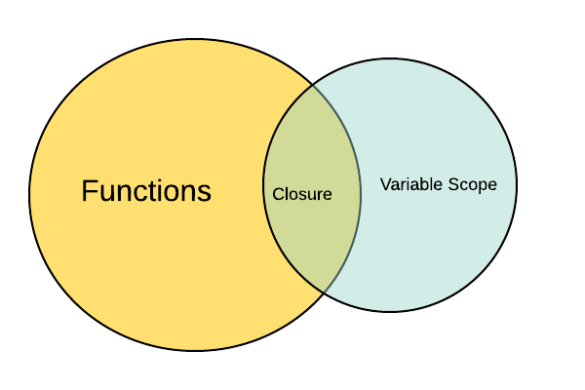Table of Contents
In JavaScript, arrays are a fundamental data structure used to store multiple values in a single variable. JavaScript provides several methods to work with arrays efficiently. Among these methods, the find, findIndex, and filter methods are commonly used for searching and filtering elements in an array. In this article, we will explore the differences between these three methods, how they work, and when to use each of them.
Arrays in JavaScript are indexed collections of elements, and often we need to search for specific elements or filter out elements based on certain conditions. The find, findIndex, and filter methods provide solutions to perform these operations with ease.
The find Method
The find method is used to retrieve the value of the first element in an array that satisfies a given condition. It takes a callback function as an argument, which will be executed on each element of the array until a match is found. The find method returns the value of the first matching element, or undefined if no element matches the condition.
const numbers = [10, 25, 5, 40, 15];
const result = numbers.find((num) => num > 20);
console.log(result); // Output: 25
The findIndex Method
Similar to find, the findIndex method also takes a callback function but returns the index of the first element that satisfies the condition. If no match is found, it returns -1.
const fruits = ["apple", "banana", "orange", "grape"];
const index = fruits.findIndex((fruit) => fruit === "orange");
console.log(index); // Output: 2
The filter Method
Unlike the previous two methods, filter returns an array of all elements that meet the given condition. It creates a new array containing all matching elements and leaves the original array unchanged.
const scores = [80, 90, 75, 95, 85];
const passedScores = scores.filter((score) => score >= 85);
console.log(passedScores); // Output: [90, 95]
Comparing find, findIndex, and filter Methods
In summary, the main differences are:
- The
findmethod returns the value of the first matching element, whilefindIndexreturns the index of that element, andfilterreturns an array of all matching elements. - If no match is found,
findreturnsundefined,findIndexreturns -1, andfilterreturns an empty array. - Use
findwhen you need the first element that matches a condition,findIndexwhen you need its index, andfilterwhen you need all matching elements.
Performance Considerations
When dealing with large arrays, performance becomes crucial. In general, the find method is more efficient when you only need the first match, as it stops searching once it finds one. The filter method creates a new array and might be less performant for large datasets.
Best Practices for Using these Methods
To make the best use of these methods:
- Ensure your callback functions are optimized for performance.
- Always check if the result is not
undefinedor -1 before using it. - Consider using
findIndexif you need both the value and its index.
Real-world Examples
Let’s explore some real-world scenarios where these methods are handy:
- Example 1: Finding a specific user in an array of users based on their ID using
find. - Example 2: Determining if a user has purchased a product using
findIndex. - Example 3: Filtering out inactive users from an array using
filter.
Miscellaneous Array Methods
In addition to the find, findIndex, and filter methods, JavaScript provides several other useful array methods that cater to different scenarios. Let’s explore some of these miscellaneous methods:
1. Some Method
The some method tests whether at least one element in the array passes the condition specified by the provided callback function. It returns a boolean value true if any element satisfies the condition; otherwise, it returns false.
const numbers = [5, 10, 15, 20, 25];
const hasEvenNumber = numbers.some((num) => num % 2 === 0);
console.log(hasEvenNumber); // Output: true
2. Includes Method
The includes method determines whether an array includes a certain element, returning true or false accordingly. It is a simpler alternative to the indexOf method, as it does not require checking the index returned.
const fruits = ["apple", "banana", "orange", "grape"];
const hasBanana = fruits.includes("banana");
console.log(hasBanana); // Output: true
3. Sort Method
The sort method is used to arrange the elements of an array in ascending or descending order. By default, it converts elements to strings and sorts them based on their UTF-16 code units. To sort numbers correctly, a comparison function can be provided.
const names = ["John", "Alice", "Bob", "Eve"];
names.sort();
console.log(names); // Output: ["Alice", "Bob", "Eve", "John"]
const scores = [80, 65, 90, 75];
scores.sort((a, b) => a - b);
console.log(scores); // Output: [65, 75, 80, 90]
4. Fill Method
The fill method changes all elements in an array to a static value, from a start index (default 0) to an end index (default array length). It modifies the original array and returns the updated array.
const numbers = [1, 2, 3, 4, 5];
numbers.fill(0, 2, 4);
console.log(numbers); // Output: [1, 2, 0, 0, 5]
5. Additional Miscellaneous Methods
Apart from the methods covered here, there are other array methods like map, reduce, forEach, and concat, which offer diverse functionalities for array manipulation. Familiarizing yourself with these methods can greatly enhance your JavaScript coding experience.
Conclusion
In conclusion, the find, findIndex, and filter methods are powerful tools for searching and filtering elements in JavaScript arrays. Understanding their differences and best use cases will help you write efficient and clean code when working with arrays. Additionally, exploring miscellaneous array methods like some, includes, sort, and fill will broaden your array manipulation capabilities.
Remember to choose the appropriate array method based on your specific needs, as each method serves distinct purposes. Understanding these methods and their capabilities will enable you to write more efficient and concise code, making you a proficient JavaScript developer.
FAQs
Can I use these methods on arrays of objects?
Yes, absolutely! These methods work on arrays of any data type, including arrays of objects. Just ensure that the callback function handles the object properties appropriately.
Which method is more suitable for finding a specific element in a large dataset?
If you only need the first match, the find method is more suitable due to its early termination behavior.
Do these methods modify the original array?
No, both find and filter methods do not modify the original array. The findIndex method is also non-destructive and leaves the original array unchanged.
Can I combine these methods to perform complex operations?
Yes, you can chain these methods together to achieve more complex filtering and searching requirements efficiently.
Is the order of the elements maintained in the result array when using the filter method?
Yes, the filter method maintains the order of elements from the original array in the resulting filtered array.







Add your first comment to this post